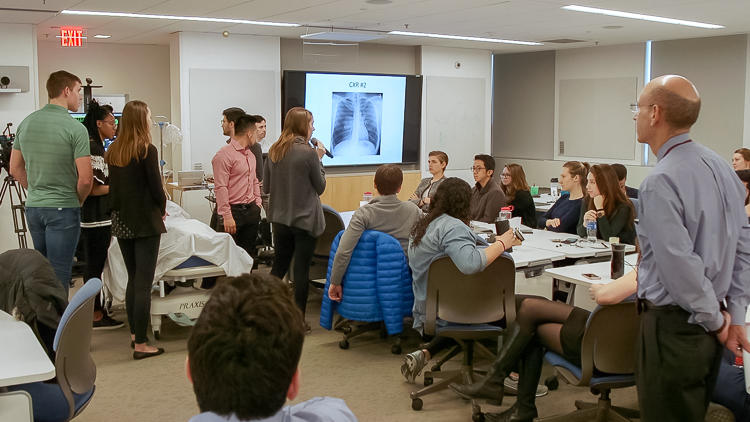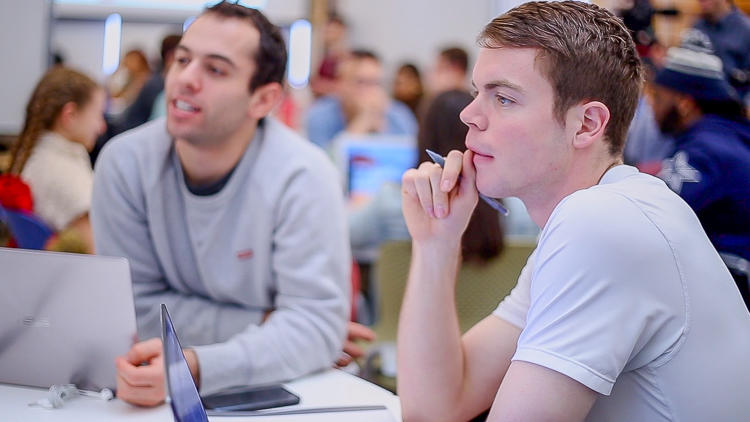Most fields, especially those that involve working with people, are not nearly as straightforward as textbooks might have students believe. However, many students find confronting uncertainty and not getting the “right answer” to be a discomforting experience. In Homeostasis I, Richard Schwartzstein and Jeffrey William see simulations as powerful exercises to get students used to navigating uncertainty. Through modeling, questioning, and devising scenarios without clear-cut answers, Schwartzstein and William emphasize to students the importance of “being okay with being wrong.”
Normalizing Uncertainty Through Simulations
Instructor
Richard Schwartzstein, Ellen and Melvin Gordon Professor of Medicine and Medical Education
Student Group
Graduate
School
Harvard Medical School
Course
Homeostasis I
Group Size
40 students
Additional Details
First-year prerequisite
- Design simulations that demonstrate for students the inherent uncertainties and challenges of your given field. Employ these kinds of simulations to help students become comfortable confronting and engaging with uncertainty.
- Emphasize students’ thought processes over their arrival at a single right answer. Consider finding ways to honor student mistakes in class and use them to deepen students’ thinking.
- Admitting to errors is linked to a number of positive outcomes for both patients and hospital staff. Han and colleagues discuss the maladaptive cognitive patterns that can inhibit error disclosure. Researchers suggest instructors use challenging simulations to give students an opportunity to disclose errors while in training (Han et al., 2017).
- Error disclosure is a critical component of medical student preparation (Appelbaum & Appelbaum, 2017).
- A white paper from the nonprofit IDEA provides an overview of the differences between “mastery” and “performance” goal orientations and how these orientations can influence how students perceive their own mistakes.
- A Science Daily blog post discusses the need for a cultural shift in professional training and practice to encourage students and practitioners admit and learn from error.
- This short Edutopia blog post provides a helpful reminder why students often resist admitting and learning from mistakes.




